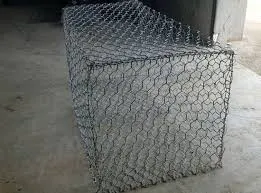
Nov . 30, 2024 02:59 Back to list
Effective Techniques for Installing Field Fencing to Secure Your Land
Installing Field Fencing A Step-by-Step Guide
Field fencing is an essential part of agricultural and livestock management. It provides security for your animals, keeps unwanted pests out, and can protect crops from being grazed upon. Whether you are a farmer, rancher, or simply a landowner seeking to enhance your property, knowing how to install field fencing can be invaluable. This guide will walk you through the installation process, ensuring your fencing is sturdy, effective, and long-lasting.
Step 1 Planning and Preparation
Before you begin the installation, it is crucial to plan the layout of your fence. Consider the area you want to enclose and any natural barriers such as trees, hills, and streams. Measure the perimeter accurately. This step will help you determine how much fencing material you need and the number of posts required.
Next, choose the type of fence suited for your needs. Common types of field fencing include barbed wire, woven wire, and high-tensile fence. Each type has its advantages depending on what you are containing or protecting. For instance, woven wire is ideal for smaller animals like sheep or goats, while barbed wire works well for larger livestock such as cattle.
Step 2 Gathering Materials
Once you have a plan, gather the necessary materials. You'll need
- Fencing material (wire or panels) - Fence posts (wood, metal, or plastic) - Post caps (to prevent moisture damage) - Concrete (for securing posts) - Tension wires (if using barbed or high-tensile wire) - Fasteners (like staples or clips) - Tools such as a post hole digger, hammer, and wire cutters
Make sure to purchase enough materials for your entire perimeter and a few extra posts in case of mistakes or future repairs.
Step 3 Setting Up the Fence Posts
The next step is to install the fence posts. Using a post hole digger, excavate holes for your posts at regular intervals, generally 8 to 12 feet apart, depending on the type of fencing. The depth of the holes should be about one-third the height of the posts to ensure stability—typically 2 to 3 feet deep.
installing field fencing

Place each post in its hole and use a level to ensure it stands straight. If you are using wooden posts, consider treating them with a protective coating to extend their lifespan. Once positioned, fill the holes with concrete and allow it to set according to the manufacturer's instructions. This step is vital for ensuring your fence remains upright against wind and pressure.
Step 4 Installing the Fencing Material
With the posts secure, it's time to attach the fencing material. Start at one corner post and unroll your fencing. If using barbed wire, attach it starting from the bottom and moving upwards (typically to three or four levels, depending on the height of your fence).
For woven wire, ensure it aligns with the posts and use staples or clips to secure it tightly. Tension wires should also be added for additional support, especially in areas with a lot of wildlife or loose soil.
Be careful not to stretch the wire too tightly, as this can cause structural issues down the line. Leave some slack to accommodate movement due to temperature changes and natural ground settling.
Step 5 Final Touches
After the main fencing is up, it's time to add any final touches. Attach post caps to the tops of your posts to prevent water damage and deter insects. You may also consider adding a gate for easy access to your fields.
Lastly, conduct a thorough inspection of the fence. Look for any loose wires, misaligned posts, or gaps that may need addressing. A well-installed fence should be sturdy and secure, requiring minimal maintenance once completed.
Conclusion
Installing field fencing may seem daunting, but with careful planning, the right materials, and following proper installation techniques, you can create a durable barrier for your land. A well-constructed fence not only showcases the beauty of your property but also provides peace of mind, knowing your animals and crops are well protected. Happy fencing!
-
Why a Chain Link Fence is the Right Choice
NewsJul.09,2025
-
Upgrade Your Fencing with High-Quality Coated Chicken Wire
NewsJul.09,2025
-
The Power of Fence Post Spikes
NewsJul.09,2025
-
The Best Pet Enclosures for Every Need
NewsJul.09,2025
-
Secure Your Property with Premium Barbed Wire Solutions
NewsJul.09,2025
-
Enhance Your Construction Projects with Quality Gabion Boxes
NewsJul.09,2025
Products categories











